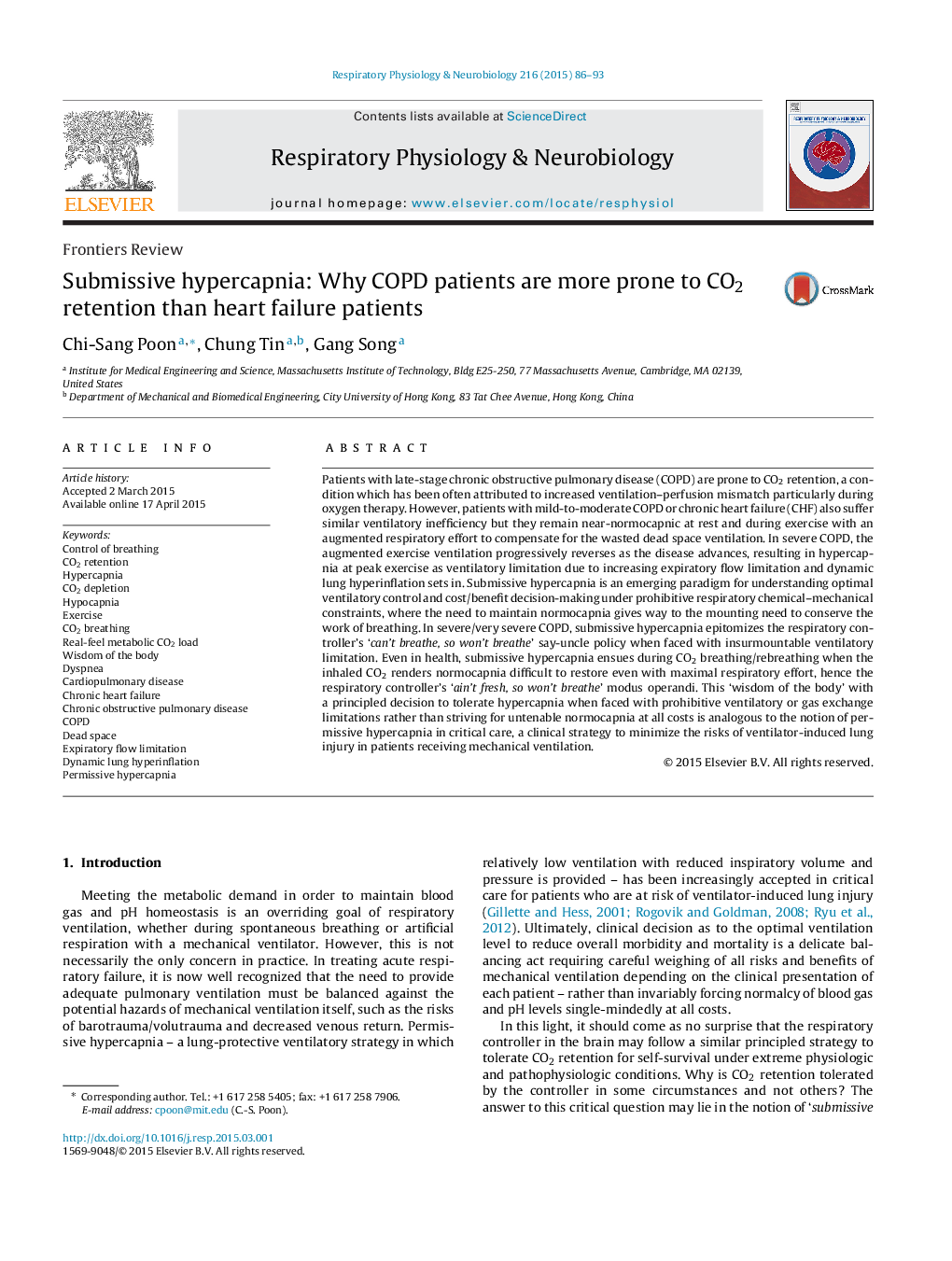| کد مقاله | کد نشریه | سال انتشار | مقاله انگلیسی | نسخه تمام متن |
|---|---|---|---|---|
| 2846829 | 1571314 | 2015 | 8 صفحه PDF | دانلود رایگان |

Patients with late-stage chronic obstructive pulmonary disease (COPD) are prone to CO2 retention, a condition which has been often attributed to increased ventilation–perfusion mismatch particularly during oxygen therapy. However, patients with mild-to-moderate COPD or chronic heart failure (CHF) also suffer similar ventilatory inefficiency but they remain near-normocapnic at rest and during exercise with an augmented respiratory effort to compensate for the wasted dead space ventilation. In severe COPD, the augmented exercise ventilation progressively reverses as the disease advances, resulting in hypercapnia at peak exercise as ventilatory limitation due to increasing expiratory flow limitation and dynamic lung hyperinflation sets in. Submissive hypercapnia is an emerging paradigm for understanding optimal ventilatory control and cost/benefit decision-making under prohibitive respiratory chemical–mechanical constraints, where the need to maintain normocapnia gives way to the mounting need to conserve the work of breathing. In severe/very severe COPD, submissive hypercapnia epitomizes the respiratory controller's ‘can’t breathe, so won’t breathe’ say-uncle policy when faced with insurmountable ventilatory limitation. Even in health, submissive hypercapnia ensues during CO2 breathing/rebreathing when the inhaled CO2 renders normocapnia difficult to restore even with maximal respiratory effort, hence the respiratory controller's ‘ain’t fresh, so won’t breathe’ modus operandi. This ‘wisdom of the body’ with a principled decision to tolerate hypercapnia when faced with prohibitive ventilatory or gas exchange limitations rather than striving for untenable normocapnia at all costs is analogous to the notion of permissive hypercapnia in critical care, a clinical strategy to minimize the risks of ventilator-induced lung injury in patients receiving mechanical ventilation.
Journal: Respiratory Physiology & Neurobiology - Volume 216, 15 September 2015, Pages 86–93